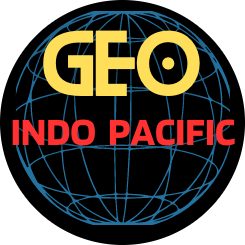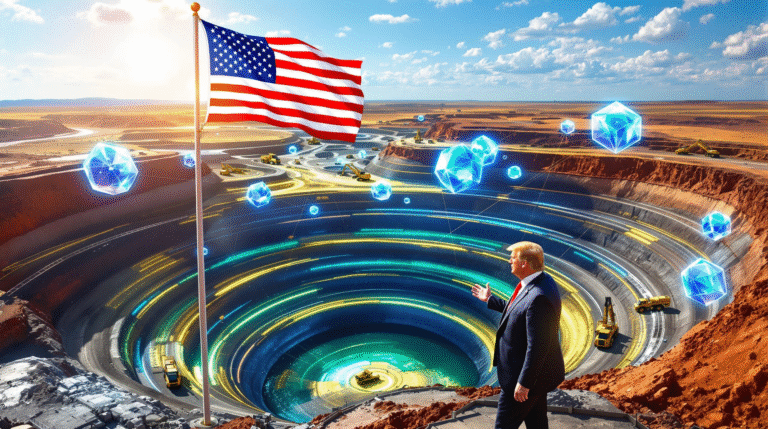
On October 31, India and the United States renewed a 10-year defense cooperation agreement (DCA), first signed in 2005. This is expected to provide some stability to bilateral relations that have been strained of late by U.S. President Donald Trump’s imposition of steep trade tariffs on India.
Arun Singh, former Indian ambassador to the U.S., told The Diplomat that despite the “huge differences,” India and the U.S. were able to sign the DCA. It “is an attempt to ensure stability in other areas of cooperation,” Singh said.
The Framework for the U.S.-India Major Defense Partnership pact was signed on the margins of the 12th ASEAN Defense Ministers’ Meeting – Plus (ADMM-Plus) in Kuala Lumpur. It comes against the backdrop of a major global geopolitical churn that includes a possible redefinition of ties between the United States and China, seen as India’s main strategic competitor in Asia.
Ahead of the signing of the pact, Indian Defense Minister Rajnath Singh described his meeting with his U.S. counterpart Pete Hegseth as “fruitful.”
In a post on X, Singh said that the agreement would “usher in a new era in our already strong defense partnership” and “provide policy direction to the entire spectrum of the India-U.S. Defense Relationship.” Describing the DCA as a “signal of our growing strategic convergence,” Singh said it would “herald a new decade of partnership.”
“Defense,” he observed, “will remain as a major pillar of our bilateral relations. Our partnership is critical for ensuring a free, open and rules-based Indo-Pacific region.”
Hegseth, on his part, said the renewed pact would advance “our defense partnership, a cornerstone for regional stability and deterrence. We’re enhancing our coordination, info sharing, and tech cooperation. Our defense ties have never been stronger.”
Details of the renewed pact have not been disclosed so far.
An Indian government statement said the “2025 framework marks a new chapter to further transform the partnership over the next 10 years. It is intended to provide a unified vision and policy direction to deepen defense cooperation.”
“India and U.S. continue to expand and deepen [their] defense relationship through military-to-military exercises and activities, information sharing, collaboration with like-minded regional and global partners, defense industrial, science and technology cooperation and defense coordination mechanisms,” it added.
According to reports in the Indian media, the pact would deepen India-U.S. collaboration in third countries in areas such as capacity building in like-minded nations in Asia, Africa, and the island nations of the Indian Ocean Region. The IOR, which India sees as its sphere of influence, has in recent years seen the Chinese making major inroads.
The pact is also expected to boost cooperation in the areas of space and missile defense, in preventing proliferation of weapons of mass destruction, and prioritizing export license approvals for weapons. It will bolster India’s ambition of developing itself into a logistics, maintenance, repair, and overhaul hub.
India-U.S. defense cooperation has seen rapid progress since the pact was first signed in 2005. India’s military procurement from the U.S., which was negligible in the year 2000, shot up to $24 billion in 2024, according to U.S. government data. Bilateral exercises across all three services have seen a spectacular jump. In 2023, India became a full member of the U.S.-commanded, Bahrain-based Combined Maritime Forces, which focuses on counter-narcotics, counter-smuggling, and counter-piracy. U.S. military ships now make regular port calls in India and India also extends refueling facilities for U.S. military aircraft.
Such cooperation was unthinkable during the Cold War days when the United States and India were on opposite sides. The rapid upscaling of ties in defense and other areas was seen as a signal of U.S. support for India’s rise in Asia and the world as a counterweight to China.
However, ties have been troubled since Trump took office in January 2025. Besides the tariffs, Trump’s overtures to Pakistan against the backdrop of a major terrorist attack in India in April that New Delhi blamed on a Pakistan-supported terrorist group have upset New Delhi. Equally disturbing to India are Trump’s repeated statements that he intervened during the May military clashes to calm tensions between India and Pakistan. India has maintained that differences with Pakistan are to be sorted out bilaterally without any third party intervention.
There is speculation that Indian Prime Minister Narendra Modi’s decision not to travel to Malaysia for meetings with the Association of Southeast Asian Nations (ASEAN) last month may have been in part due to these tensions. Indian negotiators are working overtime to conclude a trade deal that could result in some relief from the punishing tariffs. As it stands, Trump has slapped India with 50 percent tariffs – the highest in the world. This includes an extra 25 percent punitive levy for buying discounted Russian oil that Trump says is financing Moscow’s war against Ukraine.
Besides, Trump’s recent use of the term “G-2” to describe the U.S. and China is being seen in Delhi as ignoring India’s ambitions to emerge as a major pillar in a multi-polar world.
It is evident that the Quad summit, which India was to host this year in Delhi, will not happen. That again is being viewed in New Delhi as a sign that Trump doesn’t value the India-U.S. relationship as much as the China-U.S. relationship. The Quad, though not a military alliance, was seen as offering a counterpoint to China’s narrative in the Indo-Pacific region.
New Delhi’s strategy for now seems to be to manage its relationship with the United States through a difficult time by quickly concluding a trade deal while standing its ground on vital interests, including the welfare of its farmers. India’s reluctance to open its market to U.S. agricultural products is seen as a major obstacle in finalizing a trade deal.
News reports have said that Indian oil imports from the U.S. have risen in October, coinciding with speculation that India could cut imports of Russian oil, especially after Washington announced sanctions on two Russian energy companies last month. India has been importing fuel from the U.S. in recent years; in 2024, its imports were worth $15 billion. India may also procure some defense hardware from the U.S. to steady ties, a person familiar with the matter told The Diplomat.
Beyond that, New Delhi will avoid any gesture to the U.S. that could be perceived as a tilt toward the U.S., as this could adversely impact Modi’s image at home.





